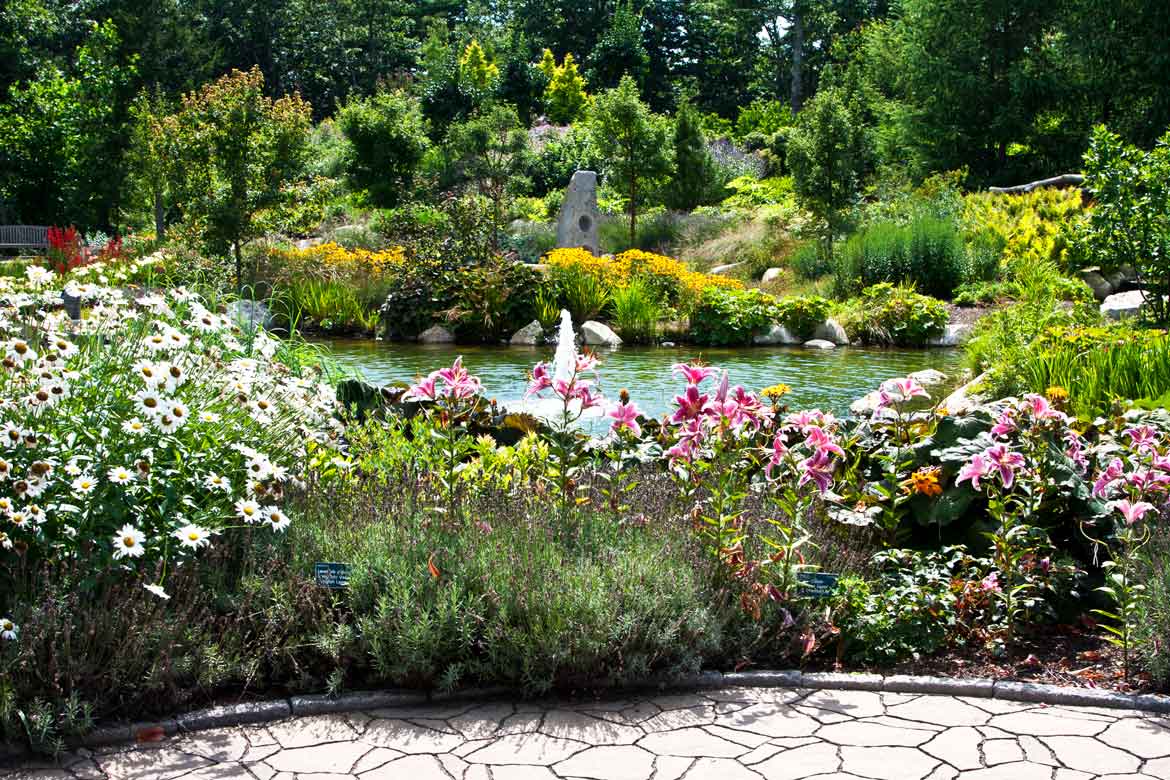Waste Management at Coastal Maine Botanic Gardens

Waste management is an essential component of a holistic, institutional approach to addressing climate change, from the reduction and elimination of single-use plastics to composting and recycling. We interviewed Adam Harkins, the director of facilities at Coastal Maine Botanical Gardens, to talk about their recycling and waste reduction methods.
Tell us about how Coastal Maine Botanical Gardens is managing waste. Did you complete an audit?
About eleven years ago, a new recycling program was created at Coastal Maine Botanical Gardens’ Bosarge Family Education Center. One aspect of managing the LEED-certified building is a three-unit recycling system within the center, including plastics, glass, metals, and paper.

A waste audit was completed to evaluate the recycling program. The waste audit demonstrated to us that there was a lack of waste communication between our general public and our employees. In response, a sustainability committee was created where staff from different departments would come together to discuss better waste management. Employees now had a chance to be more involved within our sustainability programs. The committee discussed and created a new system with individual waste containers: mixed recycling, landfills, plastics, and metals, and compost. Along with the sustainability committee, Michael Marr, our sustainability coordinator, helps run the recycling program.
Tell me more about the composting aspect. I understand you’re handling that on-site.
The compost program was created about 16 years ago within the gardens and has recently been added to the rest of our buildings. Staff now take care of the compost placed into their individual bins, and compost bins are also now located in the Alfond Children’s Garden, The Lerner garden, the Café, Borsage Education Center, and the new visitor center; we’re also of course composting plant material. We collect and compost entirely onsite.
Coastal Maine has also reduced their waste in other areas including single-use plastic, water bottles, and composting. An installation of bottle fillers, switching to glass and cardboard water bottles, and selling reusable water bottles have all reduced single-use plastics among the public guests. Employees use reusable cups, silverware, and tableware in the break room.
If institutions do not know where to start reducing their waste, what recommendations would you suggest?

One way we have encouraged waste reduction is to first start with staff to encourage a reduction of waste in the office before working with the public. We started with our three-stream recycling system and took the process one step at a time. Once our employees understood recycling and waste streams, they became more excited. Working towards getting our volunteers and our staff involved with recycling has been really successful. Education is crucial to understanding how to recycle.
Another important aspect of communication and a successful waste program is to regularly talk to the local waste collection center to validate what types of materials are accepted. Each center can vary in which materials they accept and which days they will accept them. The waste collection service that Coastal Maine uses only accepts plastic number 2 materials at specific times of the year. Everyone feels great about when they put their bottles in the recycling, but if there’s no place for bottles to go, they will end up in a landfill. Connecting with your waste collector can validate the stream of your waste.
Can you tell me about the new Guardians of the Seeds show and how the trolls in your show embody sustainable waste management.

Coastal Maine is displaying Thomas Dambo’s creation of the Guardians of the Seeds of five trolls, throughout forests. Dambo is regarded as the world’s leading recycled materials artist and his creations can be found throughout the world. The trolls embody three teachings: Save Seed and Plant More Trees, Reduce and Reuse, and Discover and Share Stories of the Woods. The trolls showcase a story about the protection and preservation of the coastal forest. Harkins believes that it’s not only about planting the seeds of trees that are around you but about the knowledge of why the Northeast region is losing trees. Climate change is accelerating the rate of more severe windstorms in the Northeast which is causing more trees to fall. Other reasons for the loss of trees are deforestation, invasive insects, fungi, and blight.
Creating art from recycled material is a great use for viewing waste in a visible way so you can see the streams of waste management. 90% of the materials used to build the trolls are recycled pallets and wood from manufacturing companies and local hardware stores within the state of Maine. The types of recycled wood include cull lumber (material from lumberyard) and oak slab (material that comes from fallen trees). Other troll materials include branches and roots of trees that have fallen during storms, for beards, hair, and eyebrows. These materials could have found a different life in a pulp mill or as paper or getting chewed up as bark mulch somewhere. But now they have an extended life as a voice for the trees.









Recent Comments